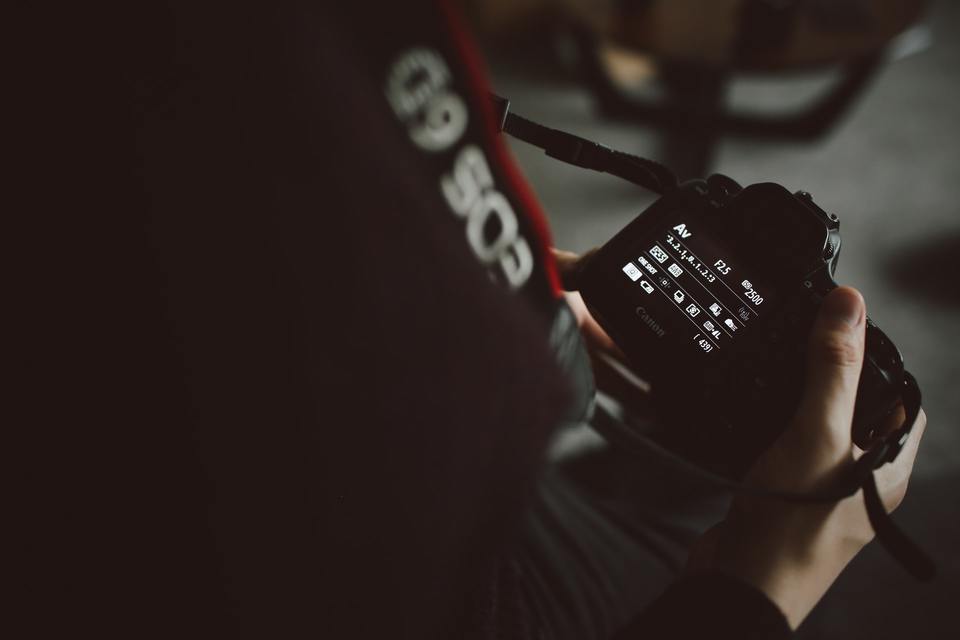
As an Amazon Associate we earn from qualifying purchases.
Even with the most expensive camera, you won't be able to maximize its abilities if you don't know how to adjust its settings. For this reason, I'm going to discuss real estate
Quick Navigation
Real estate properties have different sizes, layouts, and features, so there's no one-size-fits-all approach. However, a good starting point would be adjusting the aperture, shutter speed, and ISO depending on the available light.
Aside from that, you need to choose the appropriate shooting mode, white balance, focus, metering mode, as well as file type and size.
Listings with images sell 50% faster than others, so it's important that you know the camera settings to take professional photos. Besides exposure, the first thing you need to set is the file type. Avoid changing it as you shoot so that you can have a consistent image quality.

Similar to other kinds of
There are different kinds of shooting or exposure modes, and using the right one depends on the level of control you want.
Setting the aperture is where things can get a bit tricky as this determines how much light can reach the camera sensor. Remember, you need a wider opening or a smaller f-stop to achieve brighter photos.
Even though lenses normally are sharpest around the aperture range's midpoint, there are varying shooting conditions in real estate, so you need different ways to adjust aperture settings.
You need to balance sharpness and light sensitivity while keeping the ISO range between 100 to 400 to get sharp and clear photos. However, increasing the ISO may result in image noise and grain.
Nevertheless, you can try different ISO settings to determine how far you can go without reducing image quality.
For example, raise the ISO to 320 when using a wide-angle lens with a fast shutter speed and flash. If you're shooting in a dark area with no additional light, you can boost the ISO to 400.
The shutter speed dictates how long a lens stays open to allow light to hit the camera sensor. Thus, the value greatly depends on the available lighting in a space. You can typically set the shutter speed after applying the necessary values for aperture and ISO.
When selecting white balance, it's essential that you pick the one closest to what your eyes can see through the viewfinder. Generally, you can use Auto white balance for real estate
However, you don't have to spend too much time changing the white balance, as you can easily fix this aspect in Lightroom.

You can use both manual focus and autofocus when photographing real estate. Sometimes, it's just a matter of what works well in your situation or which one you're most comfortable using.
For instance, manual focus is ideal should you want more control when determining the sharpest focus. If you need help focusing, it's ideal to shift to autofocus. However, the broad perspective of real estate shots can even confuse autofocus systems where to focus.
If you're going to use autofocus, set the camera into Single-Shot AF, which enables you to choose a focus point while the camera finds the contrast in the single focus point. In effect, you can lock the focus even if you half-press the shutter button.
The metering mode indicates how your camera determines the exposure. There is no universal setting for the metering mode, as this depends on your style or the type of space. However, the best one should help you correct exposure and highlight details.
Using a flash is not all about attaching a unit to a camera; you also need to adjust the camera settings. With the correct settings, a flash can further illuminate a scene and take high-quality real estate photos.
Ideally, image file sizes should be between 3 to 10 MB because they are usually suitable for portals. Some listing websites may reject larger file types and sizes, so make sure to verify this with the portal or client.
You should capture your photos in RAW format as it contains unprocessed and uncompressed image data, allowing you to capture every detail you see in the viewfinder. The RAW format stores larger amounts of details than any other file type, enabling you to later edit before converting to other formats.
About 48% of real estate firms think technological changes are among the biggest challenges they need to face. Hence, it's your job as a real estate photographer to assist them in the aspect of visuals.
Now, it's time to combine the different camera settings and apply them in typical real estate
When shooting interiors with natural or external lights, these settings can serve as your starting point.

For darker rooms or spaces with a wide dynamic range, these camera settings can help you take well-exposed pictures with sharp details.
Additionally, set the camera to continuous shooting mode if you'll be taking bracketed images.
Photographing daytime exteriors means facing either bright sun or overcast light, so the following camera settings are a good place to start.
When shooting outdoors at night, you may find it difficult to focus and get clearer details.
In most cases, home buyers do their home search online, and the photos you post play an important role and may or may not give the buyer the interest of seeing the property in person. Keeping in mind that virtual home buying is becoming popular, having quality photos is essential when virtually staging them.
An empty room captured from a wrong angle too zoomed in, or poorly lit might not look attractive. Generally, homes with photos captured professionally with a high-end camera sell at a higher price than that of a smartphone.
High-quality photos capture the true look and feel of a home giving it an emotional appeal. The following are some qualities that make a real estate photo impressive.
Make sure you have sufficient natural light with warm and inviting colors. Unless artificial lighting adds value and character to the room, you should turn off every light in the room to avoid color casts and facilitate simple editing.
Usually, you may get some impressive photos by shooting exterior photos in the morning or afternoon. You may also open the windows to allow sunlight to fill the room and use net curtains to help reduce the contrast from the windows when taking interior photos.
Most seasoned real estate photographers use a wide-angle lens when shooting real estate photos. A wide-angle lens captures at a smaller focal length, at a perfect angle, and emphasizes the space. You should avoid using fisheye and other bloating techniques as they create an unrealistic sense of space.
A real estate photo should expertly capture the details of the entire room. For instance, a quality photo allows you to view out of the window in the window reflection.
Even with the best camera settings, you might not capture high-quality real estate photos if you don’t use the following
The biggest challenge you may encounter while shooting real estate interiors is the wide dynamic range that results from capturing a dark room with bright windows. However, you can use the following tips to bracket the exposure.
Knowing which camera settings to apply in real estate
